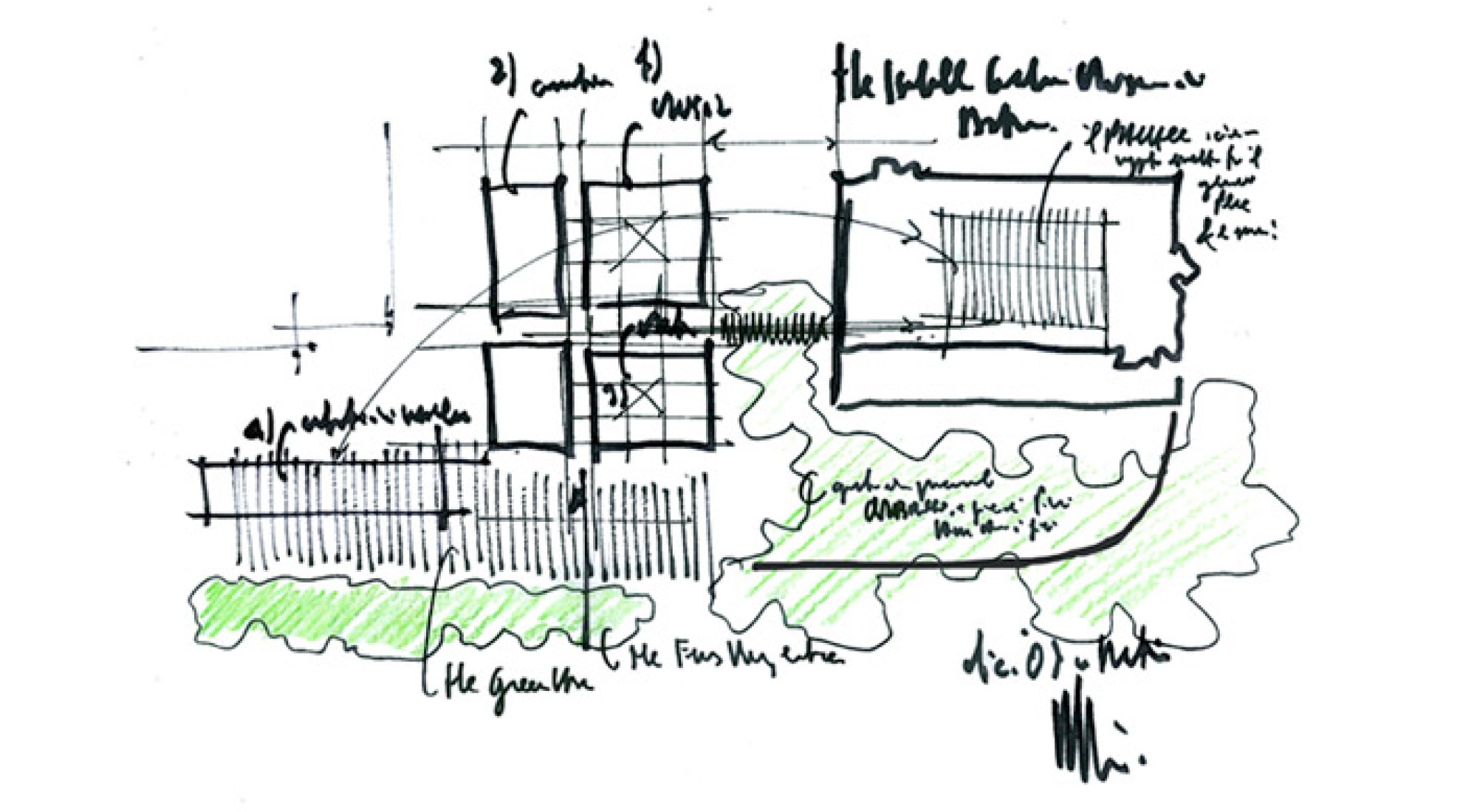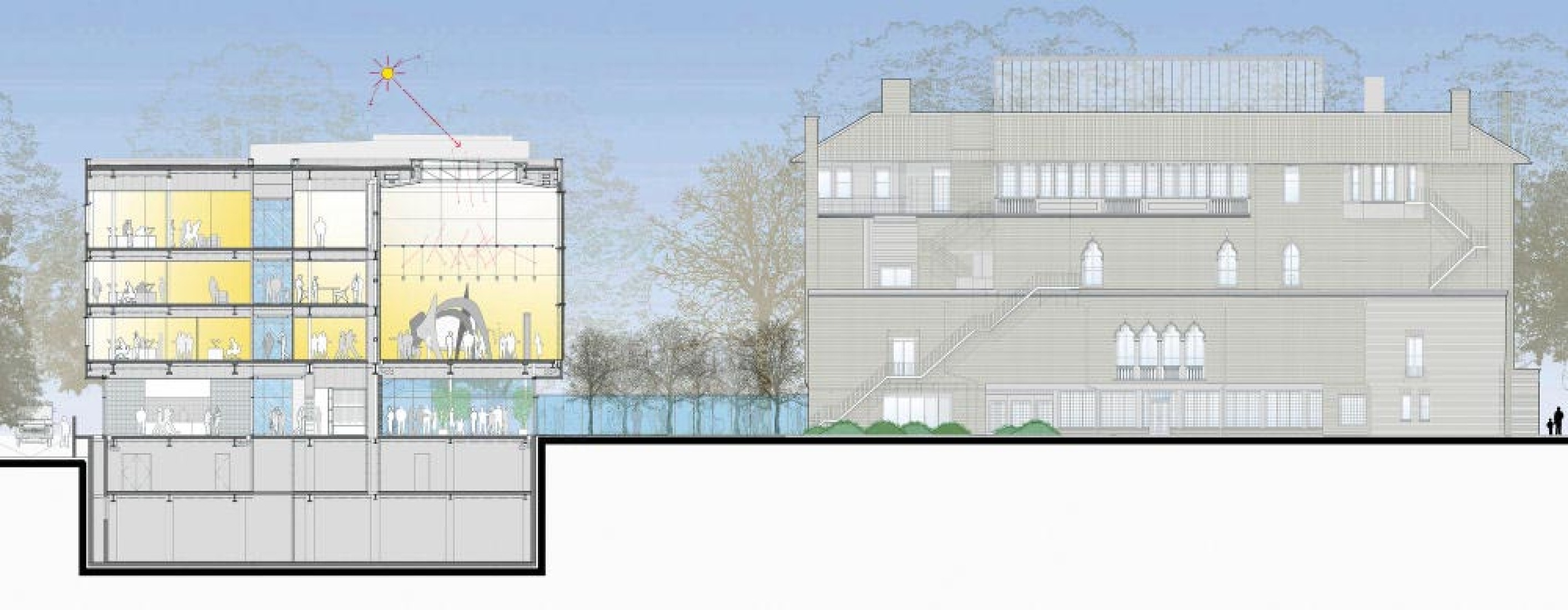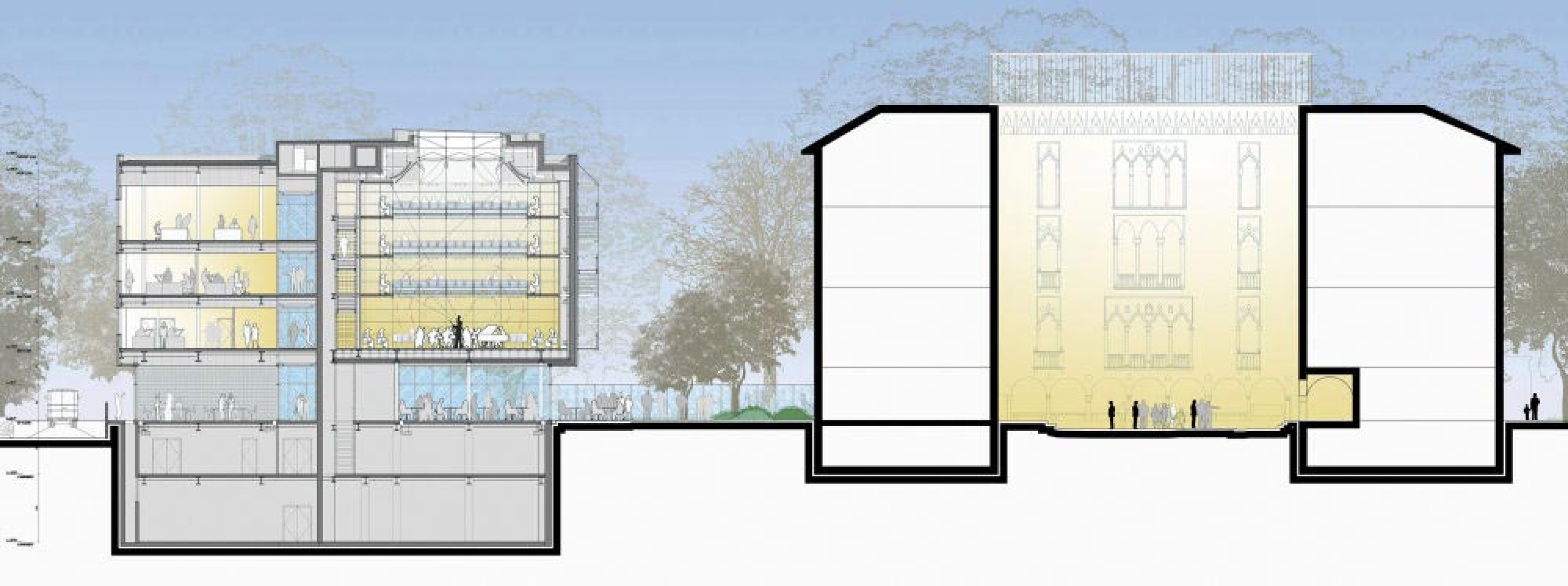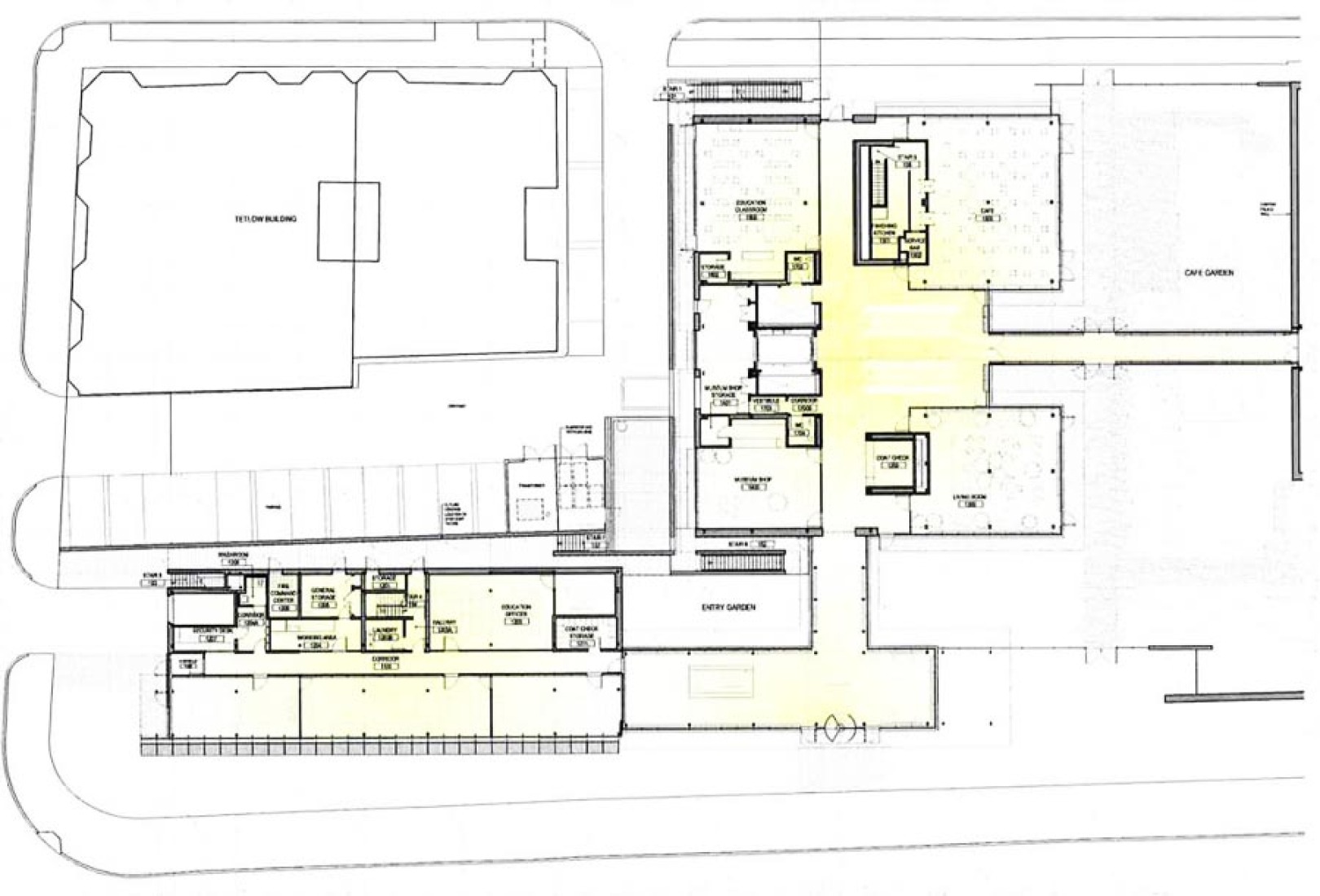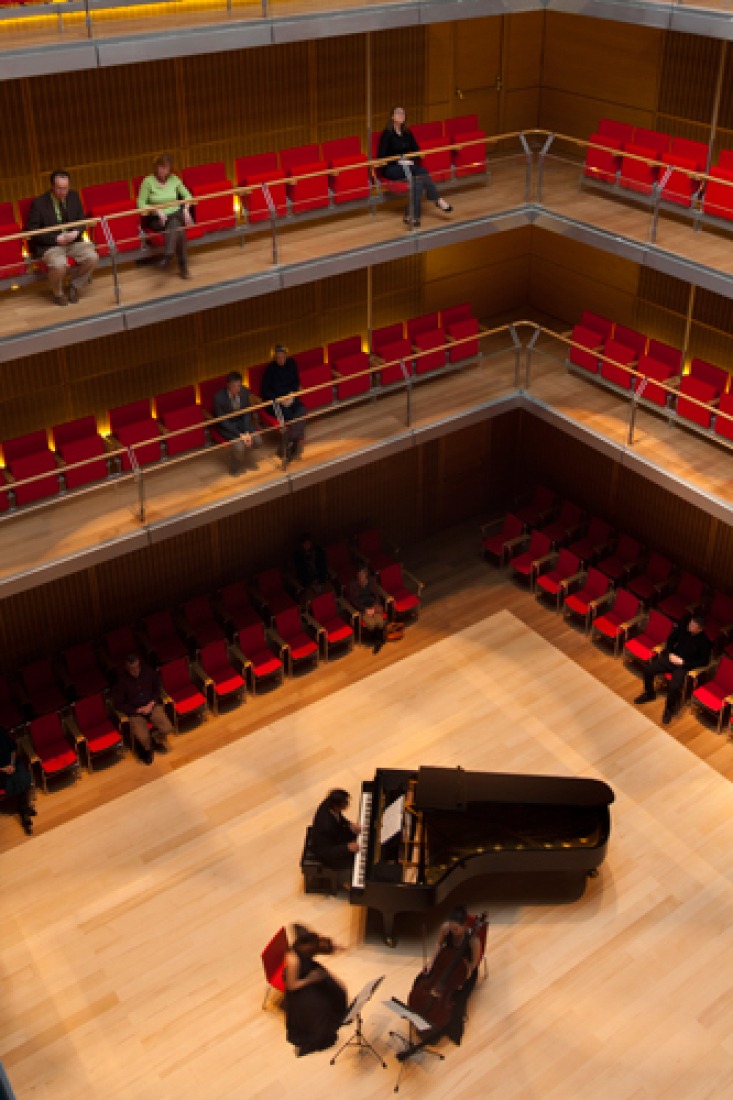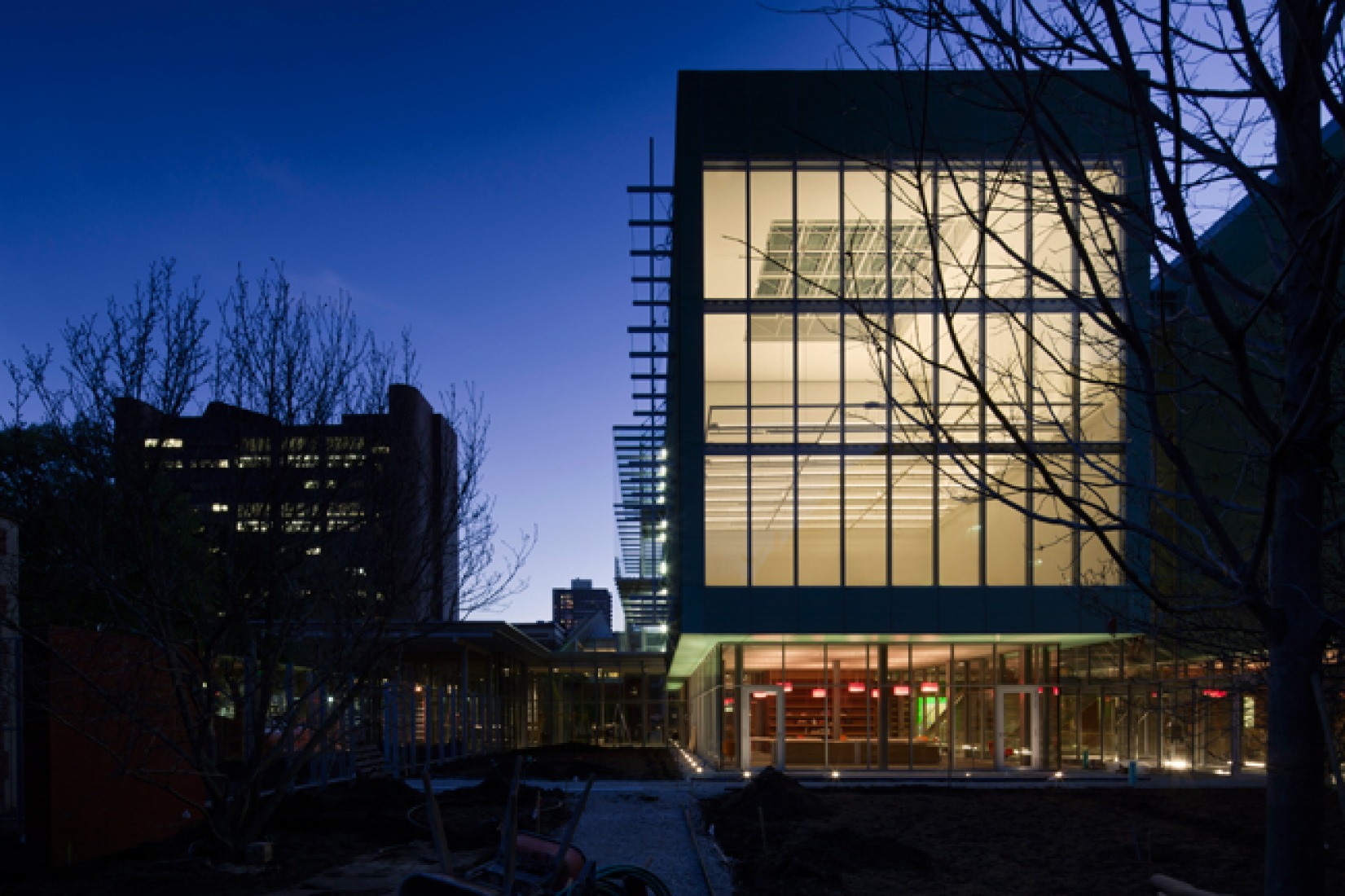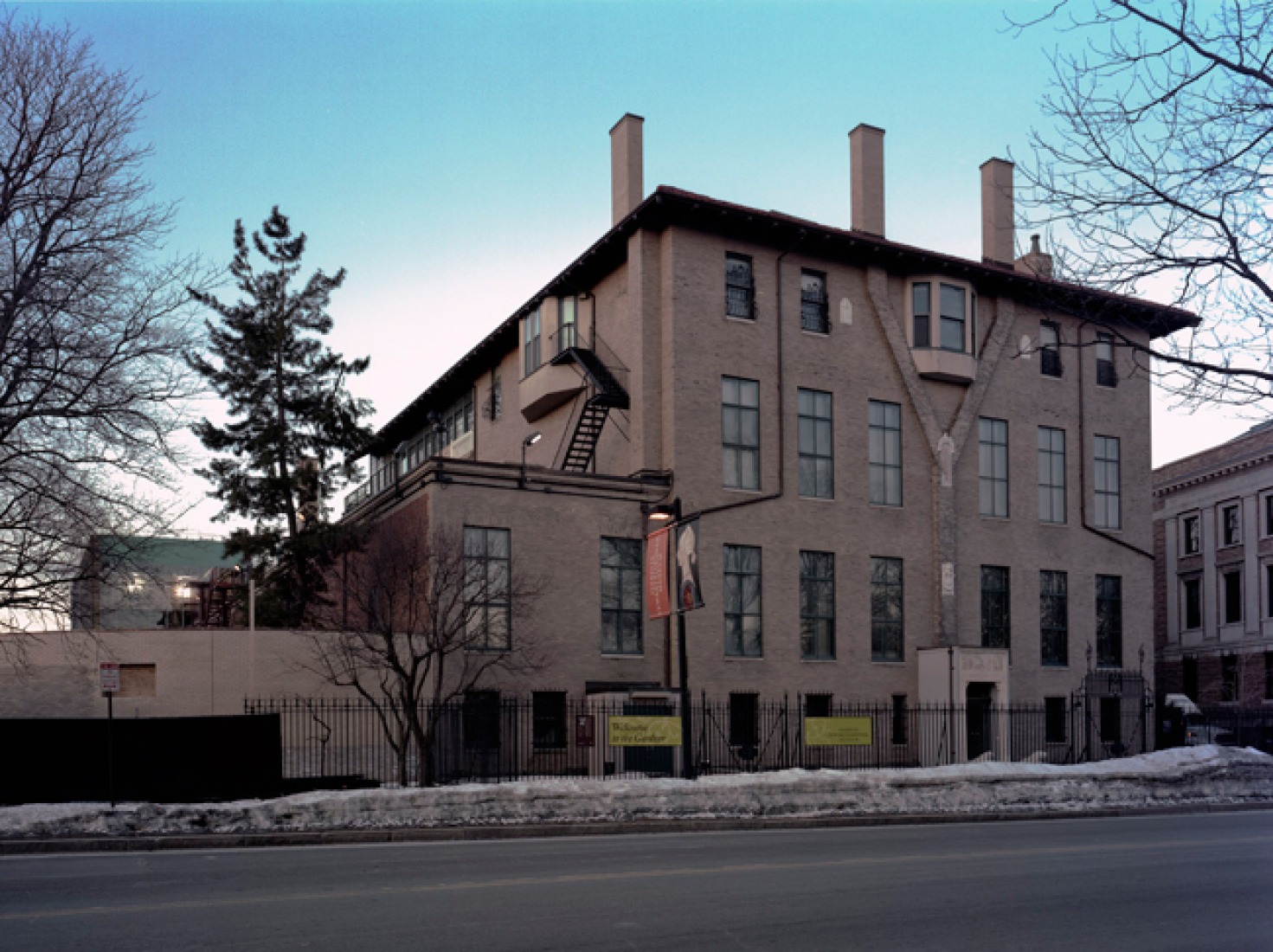El Isabella Stewart Gardner Museum ha entrado en su etapa final de construcción con los trabajadores de terminación de acabados antes de su inauguración el próximo 19 de enero. Realizada la conexión por la trasera del edificio original del museo con una pasarela acristalada, la adición de la nueva estructura permite aliviar al edificio original de los espacios auxiliares que habían estado presionando durante más de 70 años las áreas de exposición del museo público.
La ampliación de Piano de 70.000 pies cuadrados incluye un espacio de representación de las artes y una galería, ai como una nueva entrada, un restaurante, oficinas administrativas, espacios docentes, laboratorios de conservación, un invernadero y apartamentos para los artistas del museo dentro del programa de residentes. El edificio antiguo se dedicará principalmente a la visualización de la colección, que incluye la importante obra de Rembrandt, Tiziano y un quién es quién de los viejos maestros a través de impresionismo.
Cuando se decidió seguir adelante con el proyecto en 2004, la junta directiva de Gardner formó un comité de selección para celebrar un concurso en el que Piano inicialmente se negó a entrar. "De todos los que fueron invitados, sólo Rafael Moneo y Piano dijeron que no", dice el director del museo Anne Hawley. El grupo había recopilado una lista de arquitectos posibles, entre los que se incluía, SANAA de Tokio, Bruder Will de Fénix y William Rawn de Boston, cuando Piano cambió de opinión. (Según Hawley, fue persuadido por Raymond Nasher, responsable del Centro de Escultura de Dallas diseñado por Piano.) Después de un viaje a Texas para ver el Nasher y la Colección Menil, el comité rechazó la lista y selecciono directamente al arquitecto italiano.
CRÉDITOS.-
Equipo de proyecto.
Arquitecto de diseño.- Renzo Piano Building Workshop
Arquitecto de desarrollo.- Burt Hill
Diseño geotérmico.- Allied Consulting Engineering Services, Inc.
Ingeniero.- Buro Happold, Structural and MEP.
Sistema de diseño de Muro Exterior.- Front Inc.
Diseño Audio Visual.- Harvey Marshall Berling Associates.
Ingeniero normativo.- Hughes Associates, Inc.
Consultoría Geotécnico.- McPhail Associates, Inc.
Acustica.- Nagata Acoustics.
Ingeniero Civil.- Nitsch Engineering.
Consultor de conservación.- Samuel Anderson Architects.
Consultor de costes.- Stuart-Lynn Company.
Consultor de diseño gráfico. 2x4, Inc.
Representación de la Propiedad.- Paratus Group.
Manager Construcción.- Shawmut Design and Construction.
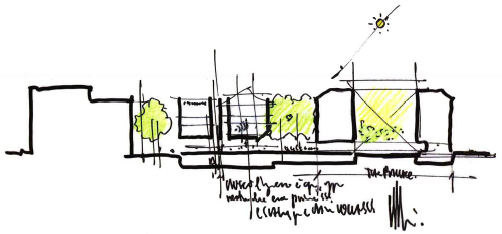
"The Isabella Stewart Gardner Museum opened to the public in 1903. As the Museum has grown to include contemporary exhibitions and special event programs, the new building is conceived as means of preserving the existing Palace and collection. Various programs and functions will be relocated to the 70,000 sqft extension, restoring the historic atmosphere of the 15 th century Venetian style Palace that originally composed the museum. The extension include the design of a concert hall, an exhibition gallery, conservation laboratories and classrooms, artist in residence apartments, working greenhouses and an entrance pavilion.
The design originates from a response to the monolithic character of the Palace, by fracturing the overall volume of the new building and opening it to the site. Composed of four smaller volumes clad in oxidized copper panels, each accommodates a programmatic element of the museum. These volumes float above a transparent ground floor activated by classrooms, cafe and orientation areas. The openness between programs, the museum gardens and the larger site encourages interactions and reveals a sense of the museum-at-work. The main volume of the building house a 300-seat performance hall. Three levels of balconies surround the performance floor, creating a intimate atmosphere with sophisticated acoustics. A central glazed roof above the hall brings natural light into the space.
The second largest volume accommodates a 2000 sqft special contemporary exhibition gallery with a moveable, translucent ceiling that provides a high degree of flexibility to the space. Natural light floods in through the glazed façade and skylight with microlouvers, both equipped with sun screens to control the quality of light. The other two volumes are dedicated to support and conservation facilities, including a laboratory, teaching space, storage and offices. A circulation spine connotes the different volumes of the building, leading visitors to the upper levels through an open central stairway and elevator.
A glass corridor hidden among the trees links the new wing to the Palace through the garden.
The greenhouses are located at the museum`s new wing to the Palace through the garden.
The greenhouses are located at the museum's new entrance facing Evans Way Park, and facilitate the horticultural program. The sloping glazed roof of the 2-story structure opens the greenhouse on the ground level and artist apartments above, to the park. The greenhouse and artist accommodations are connected to the main circulation spine through the lobby creating a level of social and intellectual interaction within the Museum."

